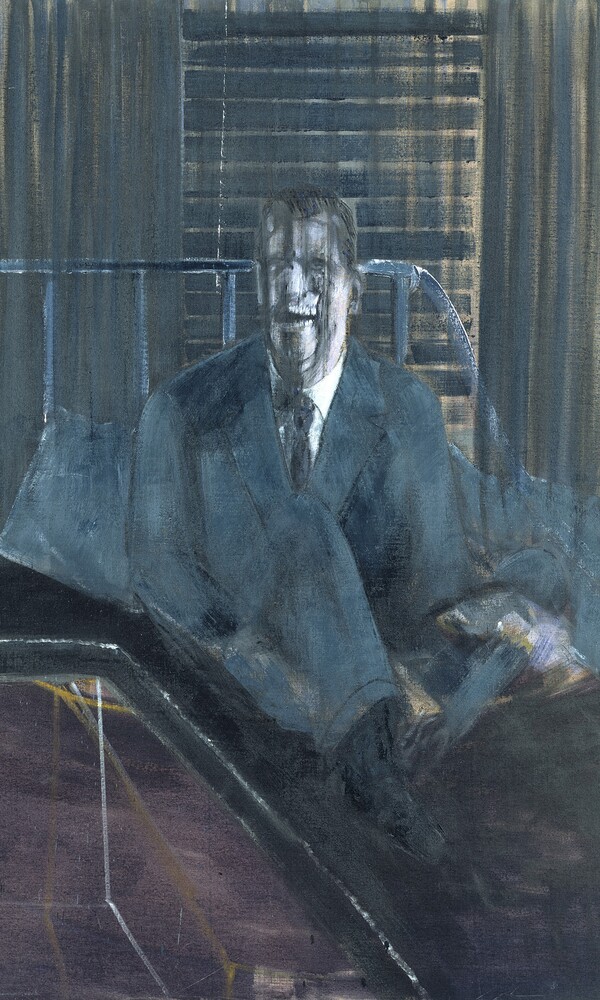The existential torment of modern man, his social isolation and his creaturely primitiveness are the focal points of Francis Bacon's painting. Thus – between representation and alienation – he created a unique gallery of man in the 20th century.
The portraits occupy a major place in Bacon's complete oeuvre. Initially the artist painted them from living models, but then increasingly with the help of photographs and reproductions. The result are ruthless self-portraits and portraits of friends and artist colleagues imbued with emotions that are almost brutally vehement. This is the first exhibition devoted specially to this aspect of Bacon's work and dealing both with the artist's painterly approach and methods of alienation, as well as with the story of his models and their relationships to the painter.
The portraits produced in the period between 1949 and 1991 illustrate how the artist gained closer access to the people in his immediate circle by means of his works. In the earliest paintings on show in the exhibition, the portrayed person appears to be emerging step by step, layer by layer, from out of the darkness of the picture ground, slowly and carefully taking on shape, only then, having attained physicality and volume as in the first 1951 portraits of the Pope, to disappear again under a milky veil - as if forced back by the artist into the depths of an impenetrable night.
In the early 1960s, with the small triptychs, Bacon developed an artistic formula which was to repeatedly preoccupy him for around 20 years. It is in these small triptychs and individual portraits, which at first seem so outwardly uniform, that a very different treatment of the painterly pupation and distortion so typical of Bacon's portraits becomes visible.
In the same period, however, the artist produced a series of outstanding portraits focusing on the full length figure. For these he arranged his models on platforms and pedestals, construed spatial constructs of great tension and intensity and thus worked continually on a comprehensive metaphor for human existence - thrown, driven, groping forwards and failing, caught between development and decay, between life and death.
For this exhibition, conceived in collaboration with the British Council and the National Gallery of Scotland, Edinburgh, more than 50 portraits have been drawn together from international collections, for example, from the Museum of Modern Art and the Metropolitan Museum of Art in New York, the Centre Georges Pompidou in Paris or the Tate Gallery in London, as well as from numerous other public and private lenders. Bacon's approach to his work is also illustrated by photographs and some of the artist's working materials.
